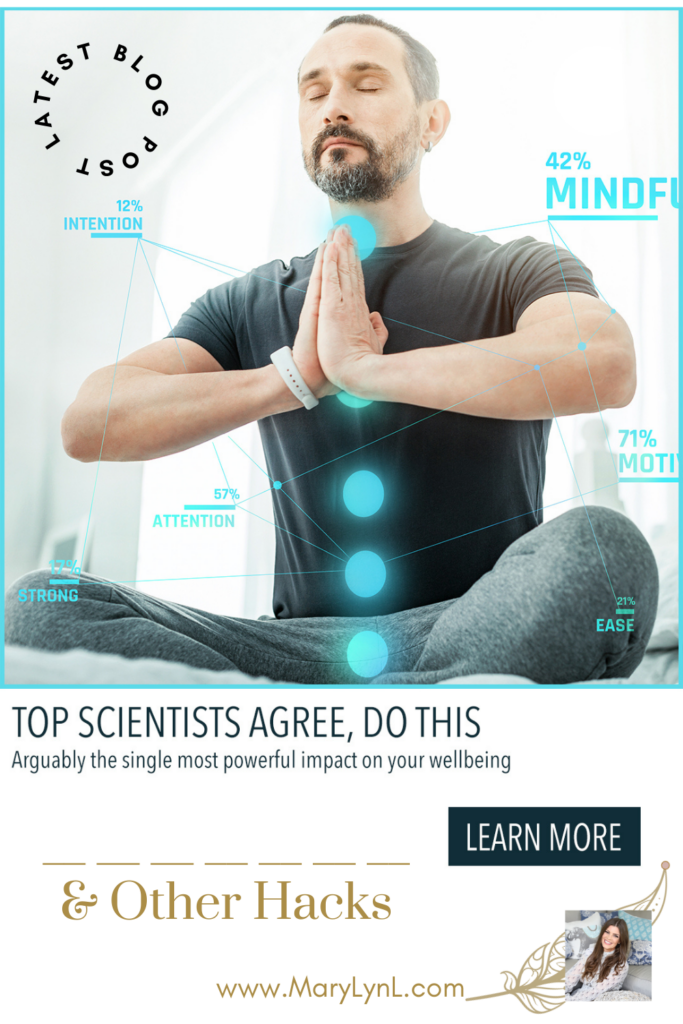
If you’re looking to make the biggest possible change to your health with the least amount of effort, it’s only a matter of time until you see the word ‘biohacking’. From health blogs to social media, the term biohacking makes a regular appearance.
What exactly is biohacking?
Bio/hacking; The DYI act of intentionally finding the most efficient ways of optimizing your biology
(your body’s health and wellness).

Here’s an easy analogy my friend Liisa uses: Biohacking is like your GPS. Your GPS generally guides you where you’re going using the most efficient route. Biohacking has the same goal. It wants to get you to a desired result in the most efficient manner. It’s a DYI project because each person’s body is unique so you need to experiment and find what works efficiently for you.
Biohacking awareness will help you save time, increase longevity and improve your overall wellness. Plus, it’s fun to take charge and observe all the improvements you can easily see no matter your age or fitness level.
If you want to make the biggest possible impact to your overall health with the least amount of effort it’s time to get comfortable biohacking.
Spend a few minutes browsing the basic biohacking tips below. They should all be familiar. You may never thought of them as “hacks” but they are. Pick one to try this week and be ready to be blown away by how big an impact little things make when it comes to caring for your body.

5 Easy Beginning Biohacks to Try Today:

1. Hydrate More
Drink more water: Dehydration can lead to a host of problems, including fatigue, headaches, and digestive issues. Drinking enough water can help alleviate these symptoms. Aim to drink at least 8-10 glasses of water a day.
Source: Popkin, B. M., D’Anci, K. E., & Rosenberg, I. H. (2010). Water, hydration, and health. Nutrition reviews, 68(8), 439-458.

2. Improve your Sleep
Get enough sleep: Lack of sleep can lead to a variety of issues, including cognitive impairment, mood swings, and weakened immune system. Aim to get 7-8 hours of sleep every night and improve it by removing your cellphone away from your bed.
Source: Watson, N. F., Badr, M. S., Belenky, G., Bliwise, D. L., Buxton, O. M., Buysse, D., … & Tasali, E. (2015). Joint consensus statement of the American Academy of Sleep Medicine and Sleep Research Society on the recommended amount of sleep for a healthy adult: methodology and discussion. Journal of clinical sleep medicine: JCSM: official publication of the American Academy of Sleep Medicine, 11(6), 591.

3. Breathe Intentionally
Get enough sleep: Lack of sleep can lead to a variety of issues, including cognitive impairment, mood swings, and weakened immune system. Aim to get 7-8 hours of sleep every night.
Source: Watson, N. F., Badr, M. S., Belenky, G., Bliwise, D. L., Buxton, O. M., Buysse, D., … & Tasali, E. (2015). Joint consensus statement of the American Academy of Sleep Medicine and Sleep Research Society on the recommended amount of sleep for a healthy adult: methodology and discussion. Journal of clinical sleep medicine: JCSM: official publication of the American Academy of Sleep Medicine, 11(6), 591.
Practice deep breathing: Deep breathing can help reduce stress and anxiety, lower blood pressure, and improve cognitive function. Take a few minutes each day to practice deep breathing exercises.
Source: Jerath, R., Edry, J. W., Barnes, V. A., & Jerath, V. (2015). Physiology of long pranayamic breathing: neural respiratory elements may provide a mechanism that explains how slow deep breathing shifts the autonomic nervous system. Medical hypotheses, 84(2), 87-88.

4. Move, Move, Move
Exercise regularly: Exercise can improve cardiovascular health, strengthen muscles and bones, and improve mood. Aim for at least 20-30 minutes of moderate exercise most days of the week.
Source: Warburton, D. E., Nicol, Crystal Whitney, Bredin, Shannon S D (2006) Prescribing exercise as preventive therapy. Canadian medical association journal, 174(7):961-74. doi: 10.1503/cmaj.1040750.

5. More Fruits and Veggies
Eat a healthy diet: Eating a diet rich in fruits, vegetables, and whole grains can help prevent chronic diseases such as heart disease, diabetes, and cancer.
Source: Schwingshackl, L., Schwedhelm, C., Hoffmann, G., Lampousi, A. M., Knüppel, S., Iqbal, K., … & Boeing, H. (2017). Food groups and risk of all-cause mortality: a systematic review and meta-analysis of prospective studies. The American journal of clinical nutrition, 105(6), 1462-1473.
What Next?
If you have already implemented these foundational biohacking basics, congratulations! That is wonderful news. You are ready to learn more advanced biohaking skills. Taking things to the next level is where it really starts to get fun. I recommend you learn about gene activation next and you can start with this simple blog post to learn more: https://blog.marylynl.com/activation-vs-supplementation-whats-the-deal/
I have been for 14 years and my biohacking journey has completely altered the course of my life. Step-by-babby-step biohacking skills signaled my dna in profound ways and the body, mind and lifestyle I enjoy is on a completely different trajectory thanks to the biohacking skills I slowly added. It’s like I’m in a plane now headed to Hawaii rather than an unknown location likely in the middle of the ocean without any land. Biohacking gave me an efficient and patient path to a beautifully life and I hope it will do the same for you.
XO,
MaryLyn

Leave a Reply